Abstract
The distribution of phospholipid ester-linked fatty acids (PLFA) in sediments of eutrophic bays (Hiroshima Bay and Aki Nada) was studied to quantify the microbial biomass, community structure, and nutritional status. A total of 63 fatty acids in the range of C10 to C24 were determined. They consist of saturated fatty acids, branched fatty acids, monounsaturated fatty acids, and polyunsaturated fatty acids, and variation was revealed in the relative proportions of these fatty acids in sediments. On the basis of the PLFA concentration in sediments, the calculated microbial biomass showed variation (mean ± standard deviation = 0.70 × 108 ± 0.53 × 108 cells per g [dry weight] of sediment) in the eutrophic bays. In sediments, a higher amount of biomass was observed in the coastal area of Hiroshima Bay than that observed in the rest of the bay and adjacent Aki Nada. The microbial community structure of the present study area, as characterized by the PLFA profiles, showed very low percentages of polyunsaturated fatty acids and long-chain fatty acids characteristic of microeukary-otes and terrestrial input, respectively, and high percentages of fatty acids characteristic of bacteria. The distribution of PLFA profiles also showed the relative contribution of both aerobic and anaerobic bacteria, especially sulfate-reducing bacteria, in the study area. The relative proportions of PLFA revealed distinctive differences among the stations of the study area, as is evidenced from six clusters obtained for the PLFA profiles. The results of Tukey's honestly significant difference test further confirmed that the sediments in the coastal area of Hiroshima Bay were significantly enriched by a number of fatty acids when compared with other areas investigated where relatively few fatty acids were present in significant quantities. No marked variation in environmental parameters in the surface- and bottom-water samples was observed, indicating the absence of any water movement in the study area. Furthermore, low redox potential and the levels of sulfide in the sediment revealed the reduced condition of the sediment. The existing environmental conditions and pollution of the study area were attributed to the observed microbial community structure in the sediments.
Full text
PDF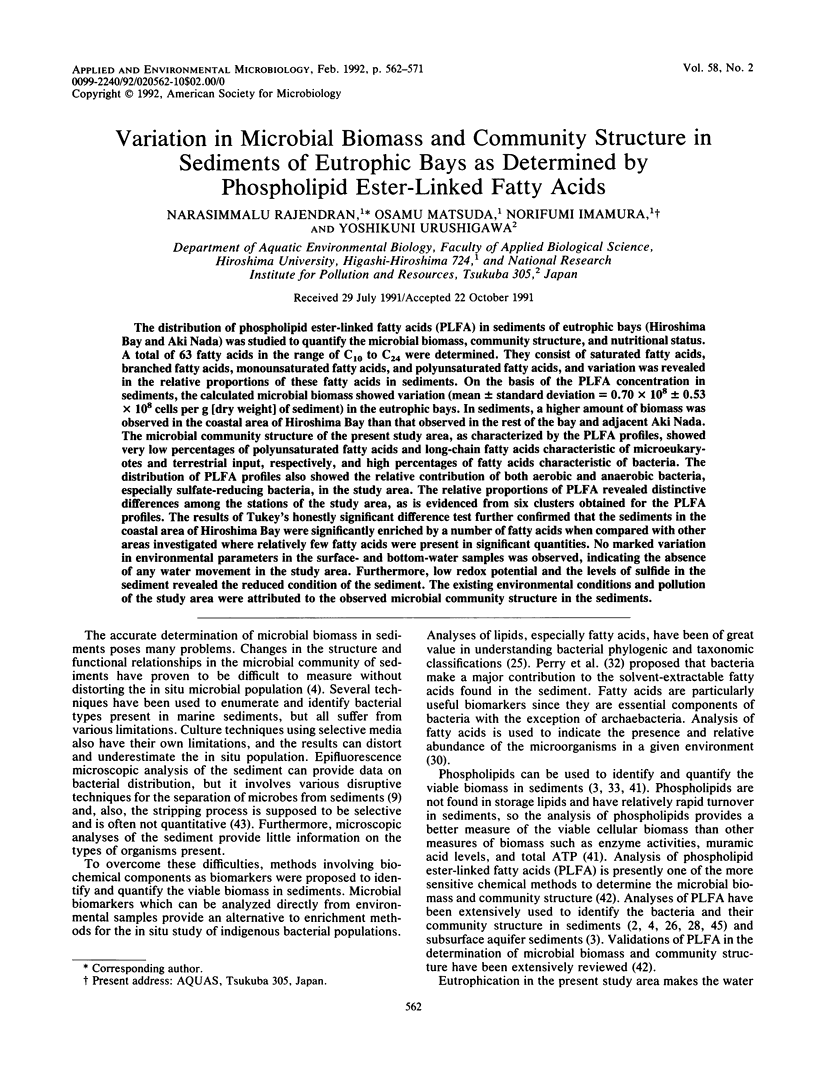
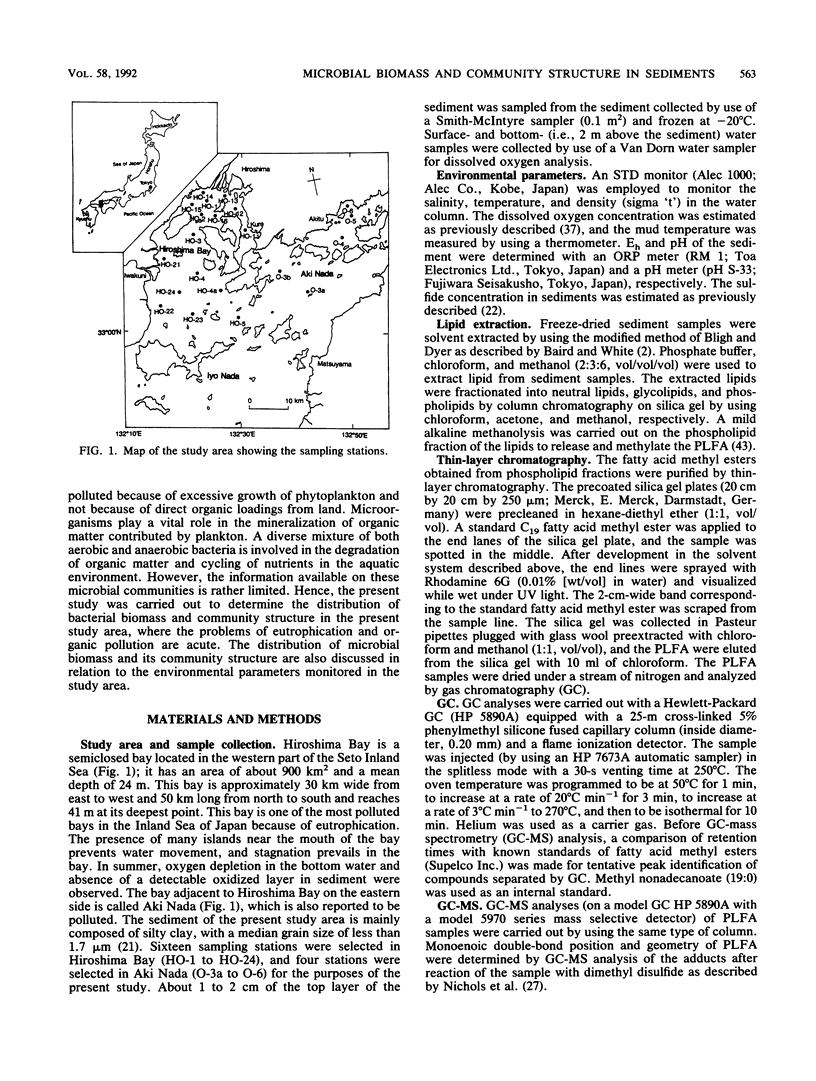
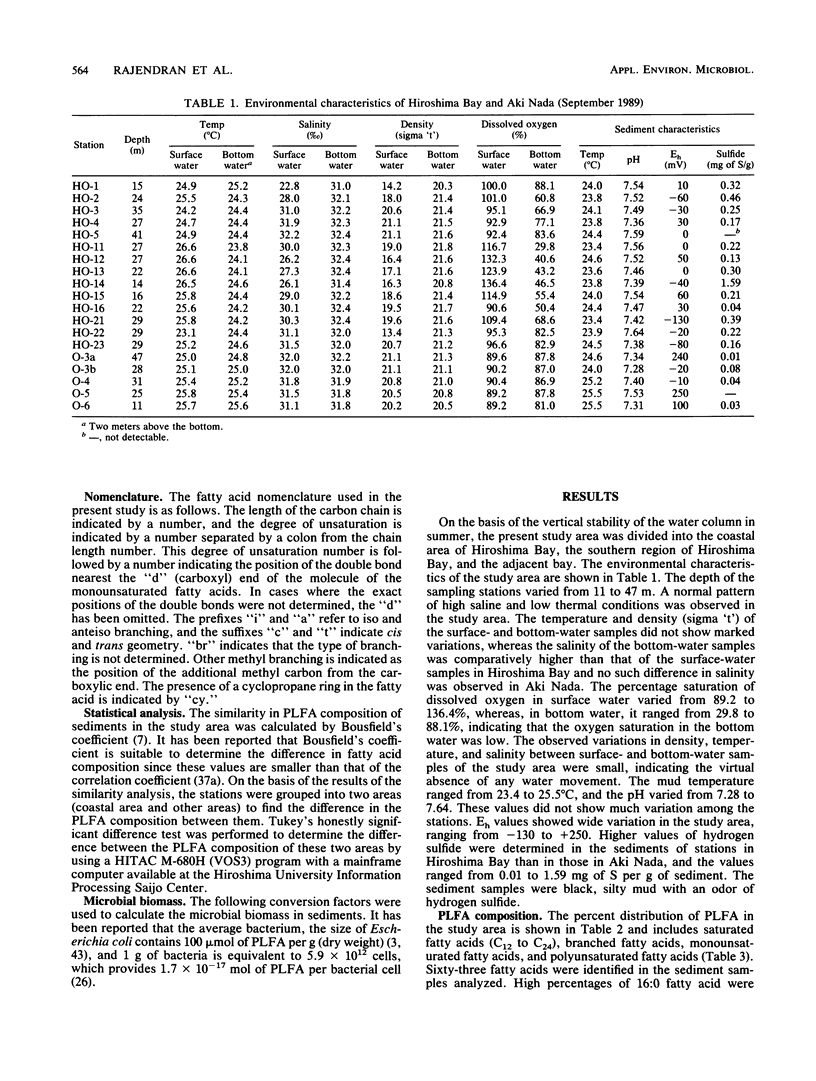
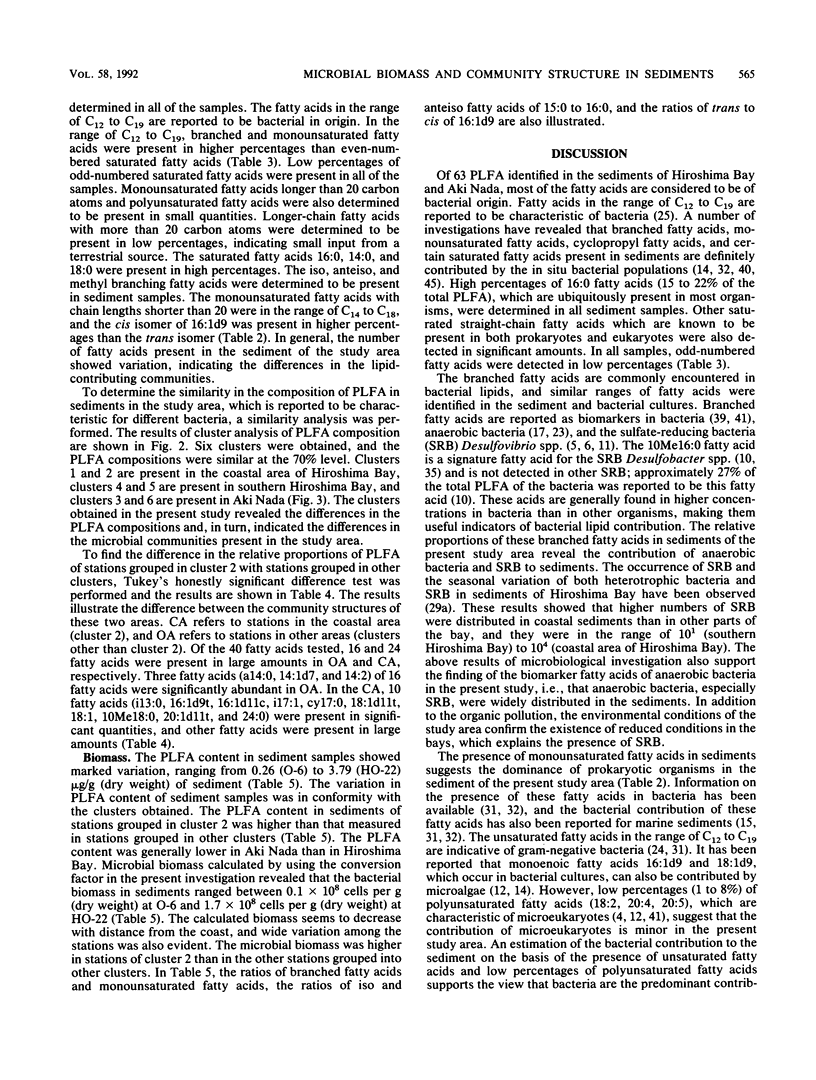
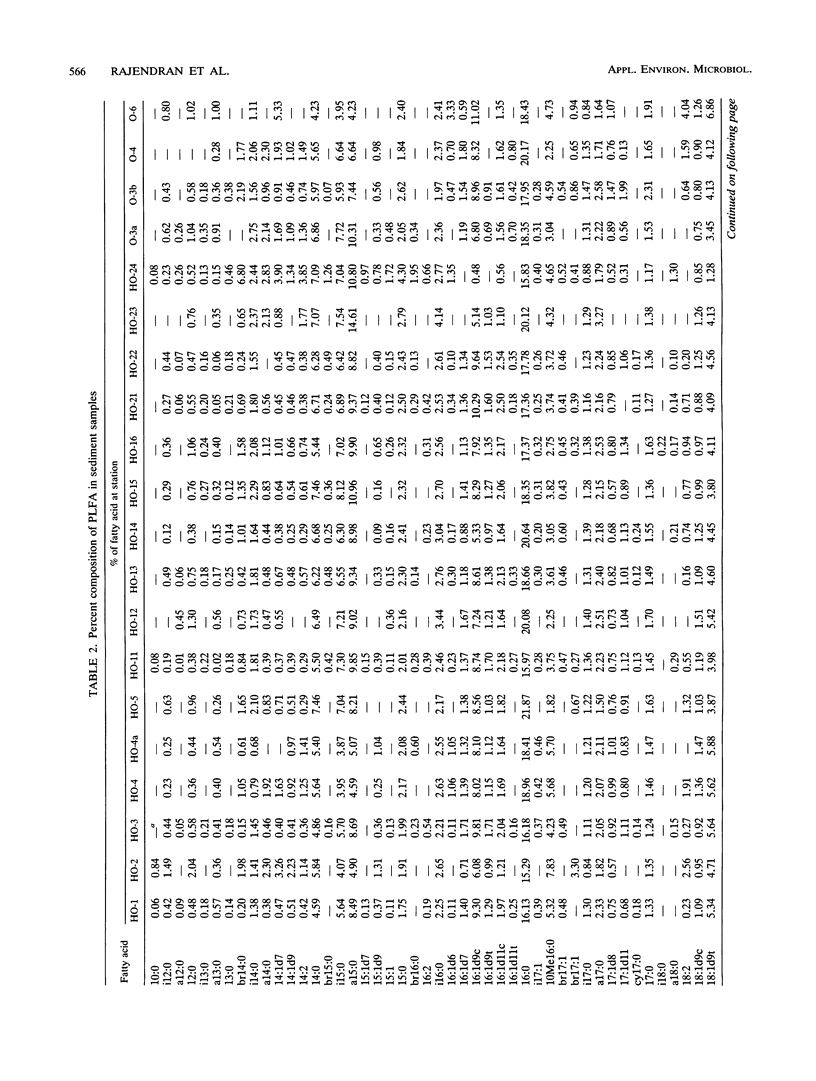
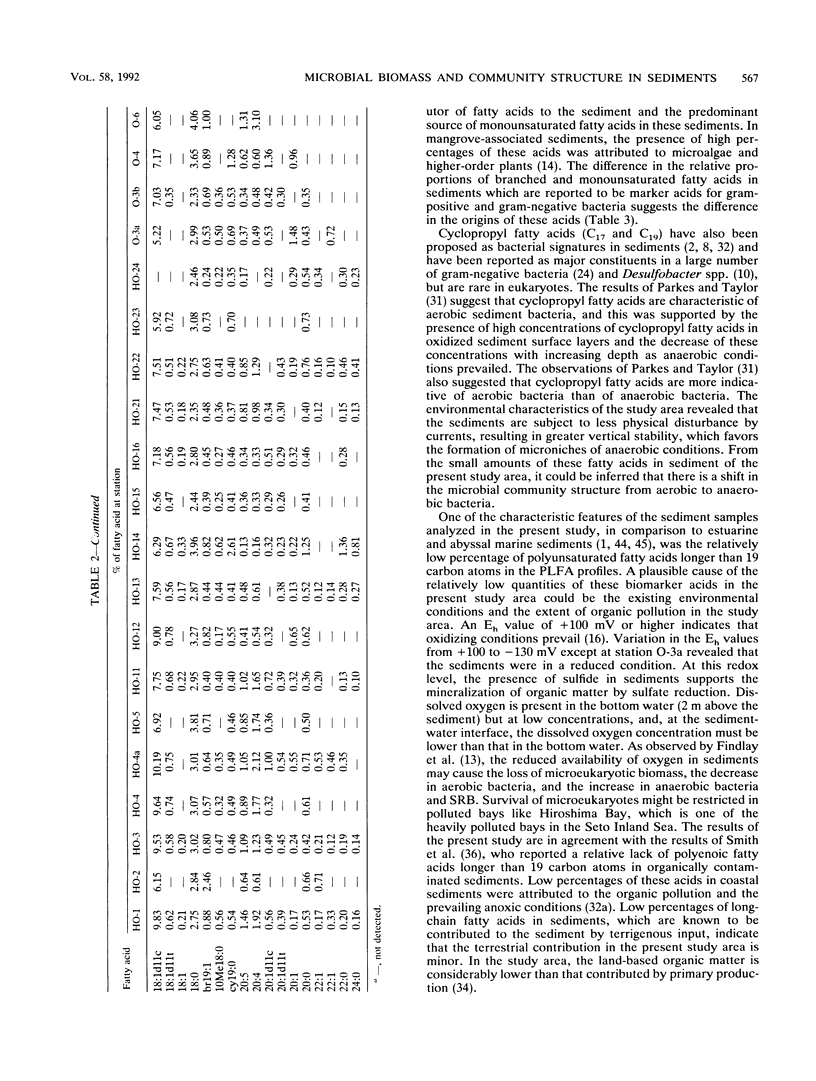
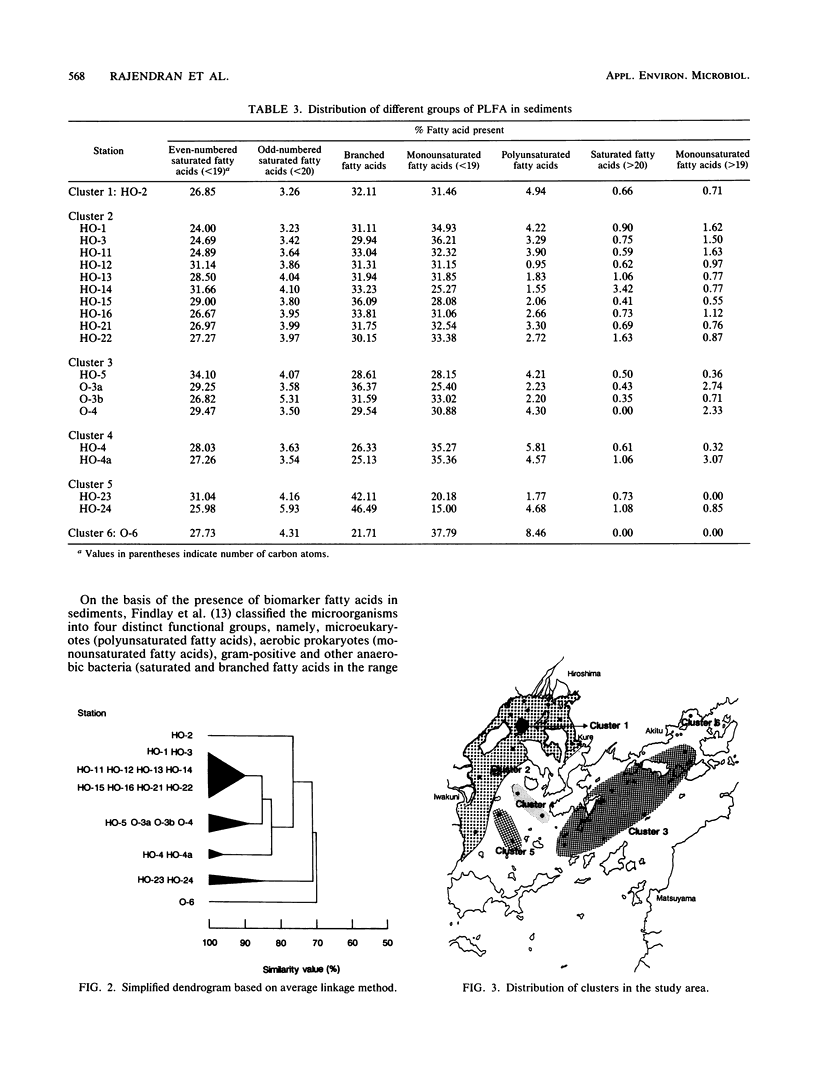
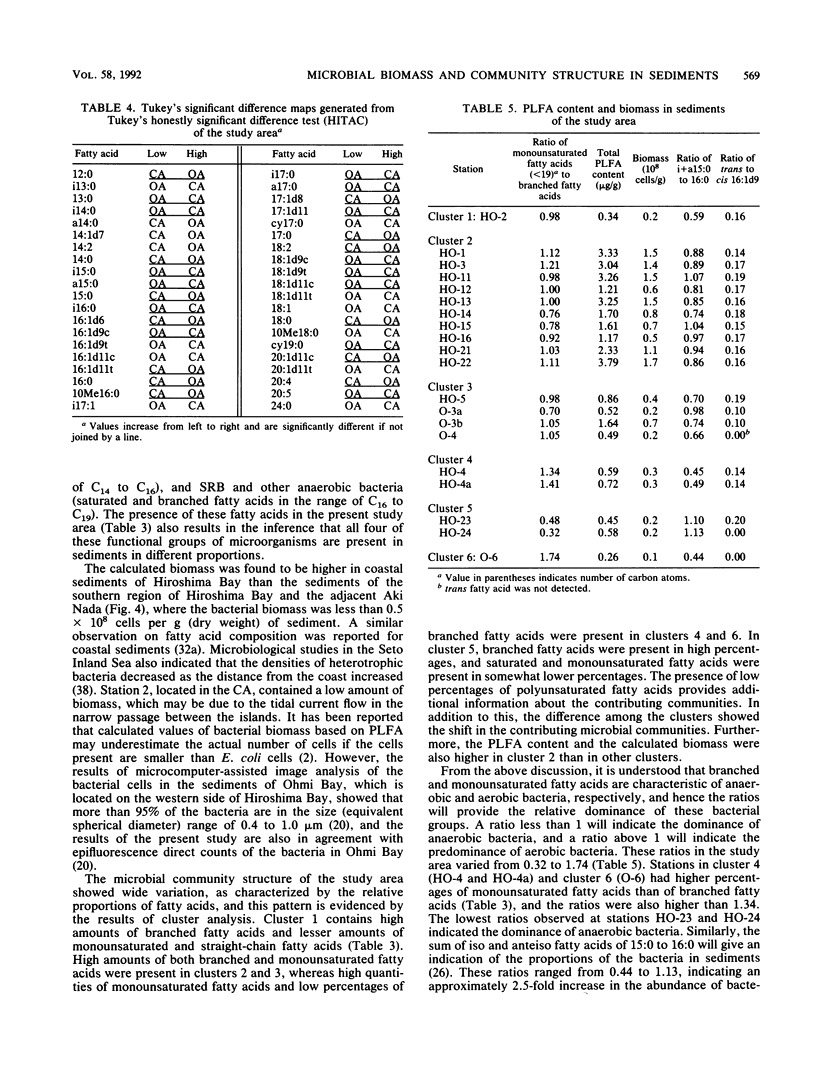

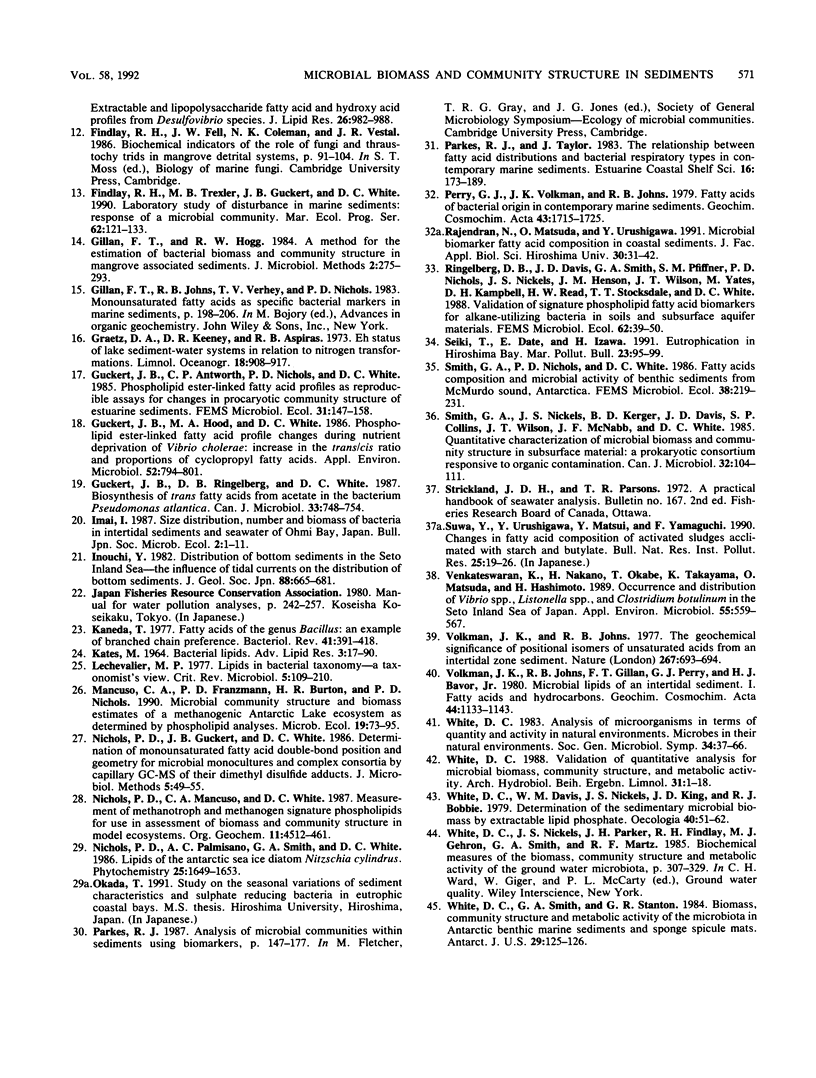
Selected References
These references are in PubMed. This may not be the complete list of references from this article.
- Baird B. H., White D. C. Biomass and community structure of the abyssal microbiota determined from the ester-linked phospholipids recovered from Venezuela Basin and Puerto Rico Trench sediments. Mar Geol. 1985;68:217–231. doi: 10.1016/0025-3227(85)90013-1. [DOI] [PubMed] [Google Scholar]
- Bobbie R. J., White D. C. Characterization of benthic microbial community structure by high-resolution gas chromatography of Fatty Acid methyl esters. Appl Environ Microbiol. 1980 Jun;39(6):1212–1222. doi: 10.1128/aem.39.6.1212-1222.1980. [DOI] [PMC free article] [PubMed] [Google Scholar]
- Boon J. J., de Leeuw J. W., Hoek G. J., Vosjan J. H. Significance and taxonomic value of iso and anteiso monoenoic fatty acids and branded beta-hydroxy acids in Desulfovibrio desulfuricans. J Bacteriol. 1977 Mar;129(3):1183–1191. doi: 10.1128/jb.129.3.1183-1191.1977. [DOI] [PMC free article] [PubMed] [Google Scholar]
- Edlund A., Nichols P. D., Roffey R., White D. C. Extractable and lipopolysaccharide fatty acid and hydroxy acid profiles from Desulfovibrio species. J Lipid Res. 1985 Aug;26(8):982–988. [PubMed] [Google Scholar]
- Guckert J. B., Hood M. A., White D. C. Phospholipid ester-linked fatty acid profile changes during nutrient deprivation of Vibrio cholerae: increases in the trans/cis ratio and proportions of cyclopropyl fatty acids. Appl Environ Microbiol. 1986 Oct;52(4):794–801. doi: 10.1128/aem.52.4.794-801.1986. [DOI] [PMC free article] [PubMed] [Google Scholar]
- Kaneda T. Fatty acids of the genus Bacillus: an example of branched-chain preference. Bacteriol Rev. 1977 Jun;41(2):391–418. doi: 10.1128/br.41.2.391-418.1977. [DOI] [PMC free article] [PubMed] [Google Scholar]
- Kates M. Bacterial lipids. Adv Lipid Res. 1964;2:17–90. [PubMed] [Google Scholar]
- Lechevalier M. P. Lipids in bacterial taxonomy - a taxonomist's view. CRC Crit Rev Microbiol. 1977;5(2):109–210. doi: 10.3109/10408417709102311. [DOI] [PubMed] [Google Scholar]
- Venkateswaran K., Nakano H., Okabe T., Takayama K., Matsuda O., Hashimoto H. Occurrence and distribution of Vibrio spp., Listonella spp., and Clostridium botulinum in the Seto Inland Sea of Japan. Appl Environ Microbiol. 1989 Mar;55(3):559–567. doi: 10.1128/aem.55.3.559-567.1989. [DOI] [PMC free article] [PubMed] [Google Scholar]


